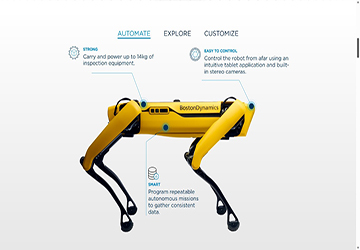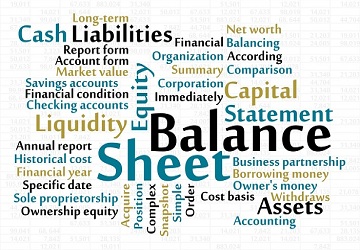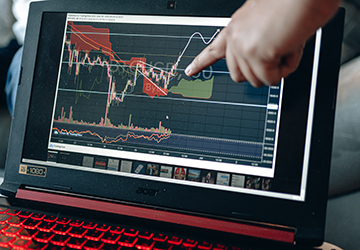Top 10 Robotics Innovations That Are Shaping the Future
Robots have participated in industry automation for over a decade, and we are now witnessing an increase in this area. Many jobs require exactness, which robots can accomplish with ease in the presence of harsh conditions. New and innovative methods are always necessary to ensure long-term sustainability and to reach new goals. In this article, we're discussing a few of these innovations that will significantly impact how we interact.
1. Self-Autonomous Mobile Robots (AMRs)
Many studies have been conducted to increase the efficiency of AMRs further, specifically in the context of extreme industrial conditions. For instance, robots need sensors and artificial intelligence to help them understand and follow the necessary actions when working in confined spaces or hazardous situations.
In healthcare, they can serve to clean, disinfect, or provide essential medicine during epidemics or high contagion rates. To complete various assignments, experiments are dedicated to improving their capabilities using AI, machine learning, and other technologies.

2.Worker Robots from Google
Google recently granted a representative customer care patent with different personalities attached. These individualities will facilitate their communication with customers via cloud-based information and allow visitors, guests, and others to navigate and interact in different situations. The idea is intriguing, but Google has previously been associated with dropping similar ambitious projects. We must observe and assess how it develops over the coming months.
3. Emotional support for AI
Like robotic workers with personalities, this idea is more dedicated to obtaining information from humans wearing apparel. The information gathered, and pre-programmed actions will correspond to the data, and the smart home and office will do so. For instance, you're wearing a smartwatch or device, and based on your heartbeat rate, it recognizes that you're nervous. It will then emit or complete tasks that will emit different smells that will comfort you. This example has been in the MIT laboratory's testing process for a while.
4. Robotics Walker from Ubtech
Consider it your butler that can speak through voice-activated commands or a touch screen on the head. It can then follow you around and observe the area mentioned; it can also complete other tasks associated with the IoT, like playing music or altering the temperature. It's one of the first Bipedal automatons that has received the green light for widespread release.
Currently, it is almost motionless compared to walking, but with arms, it will become a functional butler over time.
5. Crop Monitoring and Scouting Drones
Drones typically follow these, but enhanced 5G edge computing that extends their range can help them reach their intended destination. With the assistance of Ariel View, they can transmit information and feedback in real-time, providing them with complete images and instructions. Some have more direct capabilities, like spraying, which facilitates smoother farm management for farmers.
This is just one example of a monitoring aircraft, an additional component of a delivery or pesticide aircraft that adds monitoring.
6. Multi-Tasking Burger Flipping Machines by Momentum Corp.
The multi-tasker robotic animal is still in the prototype stage, but it's nearing completion as it can now make a Gourmet burger in its experimental phase. Live testing is expected to occur soon, and Momentum Machines are eager about it. After a few months, you'll see automatons in the background at restaurants you frequent. With the help of real-time information and communication, they can make alterations on the spot after receiving orders.

7. Fastest train
The next evolution of bullet trains that are already popular in many countries worldwide. Hyperfast trains will reduce travel time by three times and are currently under evaluation in the U.S. by the company Hyperloop, which Elon Musk supports.
The primary difference between them and bullet trains is that the latter operates around a loop in a pre-programmed environment without necessitating a driver or track, the former necessitates.
8. Boston Dynamics' SpotMini
Boston Dynamics has been around for a while now, and whenever they release a video featuring their dog-like robots, it is immediately prevalent. Those who see it firsthand are either shocked or scared by the simulation's incredible accuracy and lifelike nature.
The most recent iteration is the SpotMini; this device can accomplish multiple functions. It can assist in lifting and carrying weights and traversing terrain by climbing stairs, leapfrogging obstacles, and more. It can even function as a key to unlock doors or locks. Some people consider it reminiscent of the Skynet-styled progression of a futuristic utopia, but it still needs to be empirically tested in a live environment. However, it's exciting how much we've progressed regarding technology, and this is just the beginning.
9. Robomart
Robomart is a system that allows retailers, companies, and individuals to take over part of the grocery business for nearby consumers. With this fleet of Robomart cars, you don't have to visit the market; instead, they will come to your home and pick up your necessities, then they will return.
A pilot project is being evaluated in California; this project can provide food and movement at 25 miles per hour.
10. Food Printing
Though still in the early stages, with significant inspiration and steps taken from other 3D printing endeavors, companies are attempting to utilize food to produce. It will take some time to perfect it, lab-grown meat is already available.
Indications of the Sci-Fi Future
Many movies and concepts have been produced, and these ideas were considered extravagant, but here we are. The increasing prevalence of technology facilitated by AI, including deep machine learning, thousands of calculations, and data analysis, is performed in a shorter period. The results encourage pursuing an idea and developing a working hypothesis in just a few years.
Prototyping and testing in the lab also take a few years, and people now have a lot of exciting results. You can follow these developments online or wait for more extensive and similar articles.











